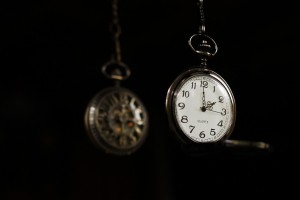 Every June, the U.S. Bureau of Labor Statistics releases the results of the American Time Use Survey for the year before. A regular publication since 2003, ATUS provides a fascinating glimpse into the habits of everyday Americans age 15 and older, from how much they sleep and watch TV to how many hours they work daily. In 2014, the BLS gathered survey data from interviews with 11,600 individuals all across the United States, in all walks of life.
Every June, the U.S. Bureau of Labor Statistics releases the results of the American Time Use Survey for the year before. A regular publication since 2003, ATUS provides a fascinating glimpse into the habits of everyday Americans age 15 and older, from how much they sleep and watch TV to how many hours they work daily. In 2014, the BLS gathered survey data from interviews with 11,600 individuals all across the United States, in all walks of life.
It turns out we Americans work harder than many people suppose, though a casual glance might suggest otherwise. Keep in mind, however, that the Survey sample included high school kids, the retired, the unemployed, the disabled, and those who hold part-time jobs as well as those who work full time. Some averages also include weekends, holidays, vacations, and sick days, so they provide a skewed view of workplace attendance.
Consider Chart 1, a generalized roundup of the raw data. It yields an average of just 3.25 hours worked per day, up from last year’s 3.14 hours. A closer look reveals that an average workday for those who worked was 7.75 hours, up from 7.58 last year, and that 153,681,000 workers comprised the workforce in 2014. The 7.75-hour average includes both full-time and part-time workers; full-time workers actually worked an average of 8.18 hours each on any given day, while part-timers worked 5.68 hours. When broken down into weekdays versus weekend days, the average hours for all workers jumped to 8.57 for full-timers vs. 5.80 for part-timers. About 35% of all workers worked on weekends, with 85% working on weekdays (note the overlap). It’s difficult, if not impossible, to determine the length of the average workweek, because the data isn’t granular enough. It appears to exceed 40 hours by a significant margin, however.
None of these figures includes “work-related” time: i.e., time spent preparing for work or commuting. That can add 50-60 minutes to the total.
About 105,658,000 people worked on an average day in 2014. This compares to 103,157,000 working on the average day in 2013—an increase of more than 2 million people in one year. Clearly, the economy expanded substantially in 2014, probably partially in rebound from the Great Recession, and otherwise from young people entering the workforce for the first time and from the unemployed finding work. Not only are we working longer hours, more of us are working—a positive sign. Interestingly, 23 percent of full-time workers did part or all of their work at home in 2014, the same as in 2013.
Workers age 18 and over also slept more: 8.44 hours, as opposed to 8.33 in 2013. The unemployed slept less, at 9.39 hours vs. 9.63 hours. As before, however, the unemployed spent a bit over 2 hours caring for other household members, including children, about twice as long as their employed counterparts. The unemployed also spent nearly twice the time on housework than the employed, at 2.71 vs. 1.53 hours daily.
Time spent on leisure and sports activities dropped slightly. Workers spent 3.68 hours in this category, down from 2013’s 3.73 hours; but TV viewing went up from 1.85 to 1.89 hours, or about 2.4 minutes. The unemployed averaged 5.30 hours of leisure, including 2.82 hours of TV; that’s down from 5.39 and 3 hours, respectively, in 2013, presumably because of the increased work hours.
What Does It Mean for the Future
The ATUS data fascinates those interested in such phenomena, but take care: review it carefully and with an open mind, in order to avoid misunderstandings. It’s too easy to misinterpret or twist to fit one’s preconceptions; imagine what someone could make of that raw figure of 3.25 hours worked on average per day, if they didn’t dig deeper or wanted to make Americans look bad. In my opinion, the biggest problem with the ATUS the data remains the fact that not all the tables measure things the same way. The main table, for example, includes everyone over 15, while many of the others focus only on those over age 18. It would make life a lot easier for us all if the BLS would address this discrepancy, AND add an average workweek entry to at least Table 1.
That said, it’s interested to note the trends as our work habits change. More of us are working, and we’re clearly working longer hours. This bodes well for the economy as well as the employment rate as we move deeper into the new century.


